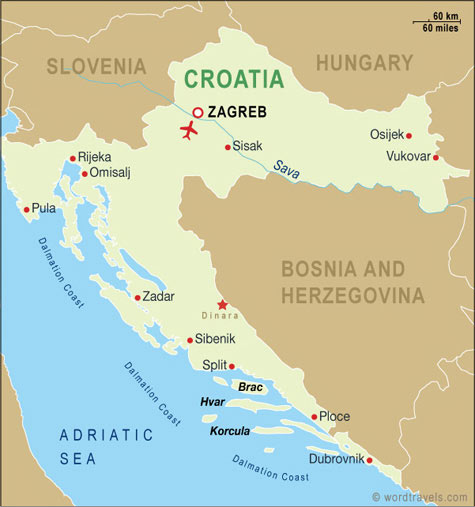WW II winners also filled mass graves
 Zagreb - Thousands of German and Croat soldiers captured in the final days of the Second World War were coldly executed and buried in mass graves found in western Croatia, human rights activists said Wednesday in Zagreb, demanding that authorities investigate.
Zagreb - Thousands of German and Croat soldiers captured in the final days of the Second World War were coldly executed and buried in mass graves found in western Croatia, human rights activists said Wednesday in Zagreb, demanding that authorities investigate.
The site at Harmica, 50 kilometres north-west of Zagreb, holds the bodies of 4,500 soldiers, including 450 German army officers, executed by the communist partisans, Ivan Zvonimir Cicak of the Croatian Helsinki Committee told a press conference.
The officers were buried in a separate grave, presumably because they were separated from the soldiers and executed last.
The victims were troops of the 392 Infantry Division, set up by the German command in Croatia in August 1943 and placed under the leadership of Lt. General Hans Mickl.
The division was composed of Croats and the "Volksdeutsche," members of the German community in Yugoslavia, with officers being from the German army, the Wehrmacht. The unit was colloquially called "Blue Division" after the grey-blue colour of its uniform.
The soldiers buried at Harmica were captured in late April 1945 by partisans under command of Josip Broz Tito, who later became the lifelong president of Yugoslavia.
Cicak said his organization is currently collecting evidence on nine mass graves in northwestern Croatia from the Second World War, three of them located and six still unfound. Along with German and Croat troops, the graves are believed to hold "many civilians," he said.
One of the recently uncovered graves, exposed during construction work on a river embankment near Cakovec, northwest of Zagreb, is believed to hold 1,500 Croat soldiers killed in June 1945. Little work was however done on it, as no money for an investigation was available.
During World War II, Croatia was nominally an independent state, but was in effect run by Berlin and implemented Nazi laws. It even ran an extermination camp for Jews and enemies of the regime at Jasenovac, 100 kilometres east of Zagreb.
The rest of the then Yugoslav Kingdom was dismembered and governed by various occupational forces from the German World War II bloc, like Italy, Hungary and Bulgaria.
After claiming victory in Yugoslavia, Tito's Partisan force took brutal revenge not only on German soldiers and the large German minority living mostly in northern Croatia and Serbia, but also on local members of wartime authorities.
Following the war, the new authorities brought ethnic Germans to concentration camps and eventually drove the survivors out. In the end, only a few thousand, out of several hundred thousands living in Yugoslavia, remained.
The smaller Italian minority in Croatia suffered a similar fate, which remains a sore issue in Zagreb's relations with Rome to the present day.
Croatian President Stjepan Mesic said mass graves must be explored, but warned against "overblowing.
"The criminals responsible for the dead in those graves should be processed and punished," he told the online edition of the Jutarnji List daily. "But any exaggeration ... is harmful to Croatian people.
But mass executions of people from the losing side in Second World War were not limited to Croatia - last month a grave with hundreds of mummified corpses, also victims of the Partisans, was found in an abandoned mine in Slovenia.
Speaking recently in the wake of that discovery, Croatian Interior Minister Tomislav Karamarko estimated the number of mass graves - any with five or more bodies - at 600 in Slovenia, 840 in Croatia, 90 in Bosnia and "who knows how many more" strewn across the entire region.
"Many knew about these crimes in the wake of the World War, but had to keep silent under a totalitarian regime," Cicak told the German Press Agency dpa. "It is that (much) more outraging when somebody today says how we should not investigate each and every crime of Partisans." (dpa)